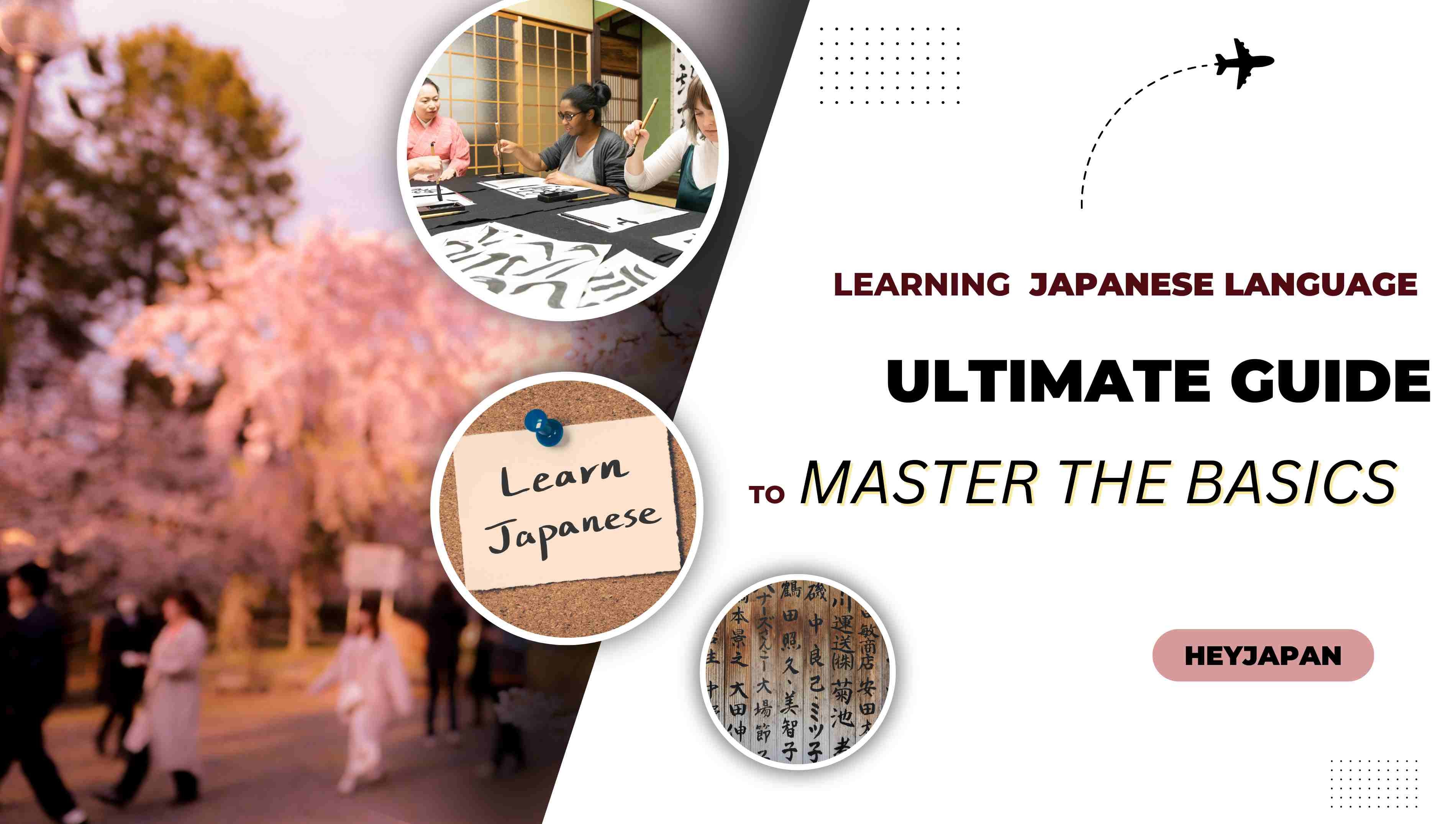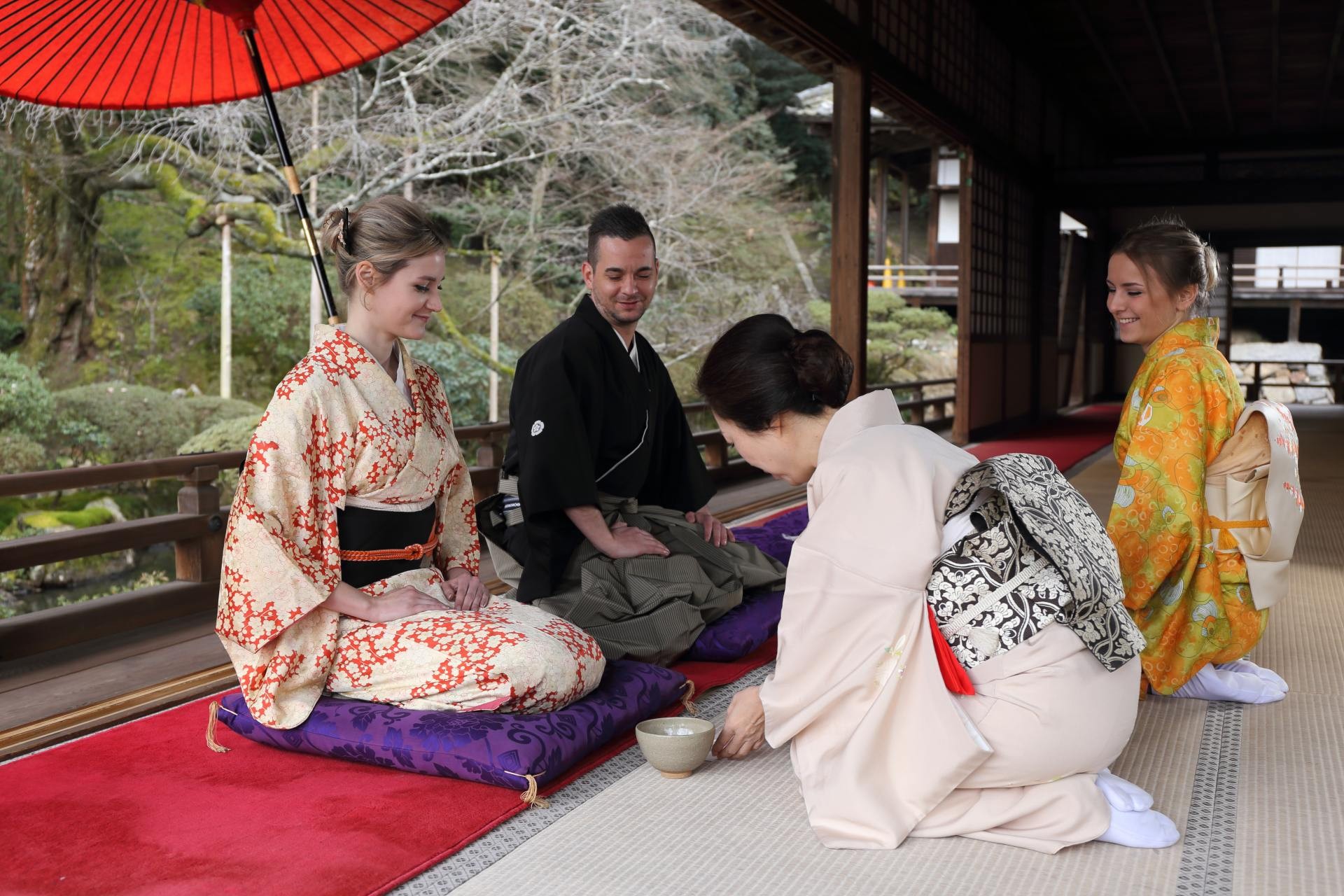
Are you ready to embark on an exciting journey into the world of the Japanese language? Whether you’re planning a trip to Japan, interested in Japanese culture, or simply eager to learn a new language, this article will guide you from zero to hero in learning basic Japanese. Even if you have no prior knowledge of the language, fear not! This comprehensive guide is designed to help beginners like you grasp the fundamentals and progress like a pro. Let’s dive in and unlock the beauty of the Japanese language together.
1. Understanding the Basics of Japanese Language
Japanese is a fascinating language with its own unique writing system, grammar structure, and pronunciation. Before diving into the specifics, it’s essential to understand the core elements that make up the Japanese language. The core elements that make up the Japanese language are:
Hiragana and Katakana: These are two phonetic scripts used in Japanese writing. Hiragana is primarily used for native Japanese words and grammatical elements, while Katakana is used for foreign loanwords and emphasis.
Kanji: Kanji are Chinese characters that were adopted into the Japanese writing system. Kanji represent words, ideas, and concepts and are used for nouns, verbs, and adjectives.

Learning kanji is essential for reading and understanding written Japanese
Grammar Structure: Japanese has a unique grammar structure that differs from English and other languages. It uses particles to indicate grammatical relationships between words and has a subject-object-verb sentence structure.
Pronunciation and Intonation: Japanese pronunciation is relatively consistent once you learn the basic sounds. Paying attention to vowel length and pitch accent is crucial for proper intonation and communication.
Vocabulary: Building a vocabulary is important in any language, and Japanese is no exception. Learning essential words and phrases will allow you to express yourself and understand others.
Culture and Politeness: Japanese language and culture are closely intertwined. Understanding cultural aspects such as honorifics, polite speech, and appropriate language use in various situations is essential for effective communication.
2. Learn Japanese like a pro
Mastering Pronunciation and Intonation
Accurate pronunciation and intonation are key to effective communication in Japanese. Pay attention to the nuances of sounds, such as long vowels and subtle variations in pitch. Practice speaking Japanese aloud, listening to native speakers, and imitating their intonation patterns to improve your spoken language skills.
Here are five fun ways to improve your skills in this area:
Shadowing: Shadowing is a technique where you listen to native Japanese speakers and repeat what they say simultaneously. This helps you mimic their pronunciation, intonation, and rhythm. Find Japanese podcasts, videos, or audio materials and practice shadowing to enhance your speaking skills.
Singing Japanese Songs: Music is a fantastic tool for learning pronunciation and intonation. Choose your favorite Japanese songs and sing along. Pay attention to the lyrics, mimic the pronunciation of the singer, and try to match their intonation. It’s an enjoyable way to practice and internalize the sounds of the language.
Watching Japanese TV Shows and Movies: Immersing yourself in Japanese media exposes you to natural speech patterns and intonation. Watch Japanese TV shows, anime, or movies with subtitles and pay close attention to how the actors pronounce words and express emotions. Practice imitating their speech to improve your own pronunciation.
Using Language Learning Apps: There are several language learning apps specifically designed for Japanese that can help you improve your pronunciation and intonation, such as HeyJapan, Duolingo, Memrise. These apps provide interactive exercises, pronunciation guides, and speaking practice. Take advantage of these tools to receive instant feedback and track your progress.
Working with a Language Partner or Tutor: Finding a language partner or tutor who is a native Japanese speaker can greatly benefit your pronunciation and intonation skills. They can provide guidance, correct your mistakes, and offer valuable insights into natural speech patterns. Regular conversation practice with a language partner or tutor can boost your confidence and refine your pronunciation.
Expanding Your Vocabulary: Essential Words and Phrases
Building your vocabulary is an essential step in learning any language. Start by memorizing basic words and phrases that are commonly used in everyday conversations. Practice using these words in context to reinforce your understanding and expand your linguistic repertoire.
To expand your vocabulary in the Japanese language, you can use several specific methods. Here are some effective strategies with examples:
- Flashcards and Spaced Repetition Systems (SRS):
- Use platforms like Anki or Quizlet to create digital flashcards with new words and their meanings.
- Example: Create a flashcard for the word “家族” (kazoku), which means “family” in Japanese.
- Reading and Listening Practice:
- Read Japanese books, articles, and manga to encounter new words in context.
- Example: Read a manga and come across the word “食欲” (shokuyoku), meaning “appetite.”
- Language Learning Apps:
- Use language learning apps like HeyJapan for interactive vocabulary lessons.
- Example: Complete a lesson on a language app that introduces the word “犬” (inu), meaning “dog.”
- Japanese Language Courses:
- Enroll in formal Japanese language courses that focus on vocabulary expansion.
- Example: Attend a class where the teacher introduces various cooking-related words like “料理” (ryouri) for “cooking” or “料理人” (ryourinin) for “chef.”
- Contextual Learning:
- Learn words within sentences to understand how they are used naturally.
- Example: Study the sentence “今日は寒いですね。” (Kyou wa samui desu ne.) – “It’s cold today, isn’t it?” to understand the word “寒い” (samui) means “cold.”
- Word Associations:
- Associate new Japanese words with familiar words in your native language.
- Example: Connect the Japanese word “新しい” (atarashii) to the English word “attractive” since both words start with “ata.”
- Keep a Vocabulary Journal:
- Write down new words, their meanings, and example sentences in a dedicated notebook.
- Example: Jot down the word “友達” (tomodachi) with its English translation “friend” and write a sample sentence using it.
- Conversation Practice:
- Engage in conversations with native Japanese speakers or language exchange partners to encounter and use new vocabulary.
- Example: During a conversation, you might encounter the word “素晴らしい” (subarashii), meaning “wonderful.”
Constructing Simple Sentences: Grammar Essentials
Understanding Japanese grammar is crucial for constructing meaningful sentences. Learn about sentence structure, verb conjugation, particles, and sentence endings. Familiarize yourself with basic sentence patterns and practice forming simple sentences. Gradually, you’ll be able to express your thoughts and ideas more fluently.
Here are some book recommendations for learning Japanese grammar:
“Genki: An Integrated Course in Elementary Japanese” by Eri Banno, Yoko Ikeda, and Yutaka Ohno: This popular textbook series is widely used in Japanese language classrooms. It provides comprehensive lessons on grammar, vocabulary, and kanji, along with exercises and audio materials to enhance learning.
“Japanese Grammar Guide: A Comprehensive Reference to the Japanese Language” by Tae Kim: This guide offers a detailed explanation of Japanese grammar concepts, from basic to advanced levels. It includes clear examples, practice exercises, and helpful mnemonics to aid understanding.
“A Dictionary of Basic Japanese Grammar” by Seiichi Makino and Michio Tsutsui: This dictionary-style reference book provides in-depth explanations of Japanese grammar points, organized in a user-friendly format. It covers a wide range of grammar structures, with example sentences and usage notes.
Reading and Writing: Kanji Characters
Kanji characters add depth and complexity to the Japanese language. Start by learning commonly used kanji characters and their meanings. Practice reading and writing sentences containing kanji to enhance your reading comprehension and written communication skills.
Overcoming the difficulties of learning kanji as a beginner in Japanese can be challenging but certainly achievable. Here are some strategies to help you navigate the complexities of kanji:
Break it Down: Kanji can appear intimidating due to their intricate strokes and multiple readings. Start by focusing on a small set of kanji characters at a time. Learn their meanings, readings, and common vocabulary associated with them. Gradually expand your knowledge as you become more comfortable.
Use Mnemonics: Create mnemonic devices or mental associations to remember kanji. Break down the components of a kanji character and create a story or visual image that relates to its meaning. Mnemonics make memorization more engaging and help you recall kanji more effectively.
Practice Writing: Kanji is a combination of strokes that need to be written in a specific order. Regularly practice writing kanji to familiarize yourself with their forms. Utilize writing practice sheets, apps, or even physical flashcards to reinforce muscle memory and improve stroke accuracy.
Repetition and Review: Consistent review is key to retaining kanji knowledge. Regularly revisit previously learned kanji to reinforce your memory. Use flashcards, quizzes, or spaced repetition systems to keep the kanji fresh in your mind and prevent forgetting.
Contextual Learning: Learn kanji in context by studying vocabulary and sentences that incorporate the characters. Understanding how kanji is used in real-life situations helps reinforce their meaning and usage. Read books, articles, or manga with furigana (hiragana pronunciation guides) to gradually expose yourself to more complex kanji.
Utilize Technology: Take advantage of technology to support your kanji learning. There are various apps, websites, and online resources available that offer interactive kanji quizzes, stroke order animations, and mnemonic tools. These resources can make learning kanji more enjoyable and accessible.
Seek Support: Join a study group or language exchange program to connect with fellow learners or native speakers. Sharing challenges and seeking guidance from others can provide motivation, clarification, and support as you navigate the intricacies of kanji.
Polishing Your Listening Skills
Listening comprehension is a crucial aspect of language learning. Engage with various Japanese audio resources such as podcasts, songs, movies, and dramas. Gradually increase the difficulty level to challenge yourself and improve your listening skills.
Here are some strategies to improve your listening abilities:
Immerse Yourself in Japanese Media: Surround yourself with Japanese audio content such as podcasts, radio shows, music, movies, and dramas. Listen to them regularly, even if you don’t understand everything at first. Exposure to natural Japanese speech patterns will gradually enhance your listening skills.
Start with Beginner-Friendly Material: Begin with materials specifically designed for language learners, such as graded readers, podcasts for beginners, or language learning apps that incorporate listening exercises. These resources provide slower and clearer speech to help you build a foundation.
Practice Active Listening: Engage actively while listening to Japanese audio. Focus on understanding the overall context, key information, and specific details. Take notes, summarize what you heard, and try to answer comprehension questions. This trains your brain to process and retain information more effectively.
Utilize Transcripts and Subtitles: When listening to audio or watching videos, utilize transcripts or subtitles in both Japanese and your native language. Start by listening without reading, and then check the transcripts to verify your understanding. Gradually reduce reliance on subtitles as your listening skills improve.
Shadowing and Repeating: Shadowing is the technique of mimicking the speaker’s pronunciation, rhythm, and intonation by speaking along with the audio. Repeat sentences and passages to improve your pronunciation and internalize natural speech patterns. This exercise helps train your ears to pick up nuances in spoken Japanese.
Engage in Conversations: Seek opportunities to engage in conversations with native Japanese speakers. Participate in language exchange programs, join online discussion forums, or find conversation partners. Practicing real-life interactions improves your listening skills, as you learn to understand different accents, speeds, and informal speech.
Diverse Listening Materials: Expose yourself to various genres and topics, such as news broadcasts, interviews, podcasts about hobbies or interests, or TED Talks in Japanese. Diversifying your listening materials exposes you to different vocabulary, accents, and speech patterns.
Embracing Japanese Culture
Language and culture are intertwined, and understanding Japanese culture will enhance your language learning experience. Immerse yourself in Japanese traditions, customs, and etiquette. Explore Japanese literature, art, cuisine, and festivals to gain a deeper appreciation of the language and its cultural context.

Japanese culture is rich and diverse, captivating people around the world with its unique traditions, customs, and values
Here are some highlights of Japanese culture to pique the curiosity of those learning the Japanese language:
Respect and Politeness: Japanese culture places a strong emphasis on respect, both towards others and in various aspects of daily life. Politeness is deeply ingrained in Japanese social interactions, reflected in the use of honorifics, bowing as a form of greeting, and mindful consideration of others’ needs and opinions.
Example: When meeting someone for the first time, it is customary to bow and use honorific titles like “san” (Mr./Ms.) to show respect, such as addressing someone as “Tanaka-san.”
Tea Ceremony: The Japanese tea ceremony, known as “chado” or “sado,” is an exquisite art form that combines the preparation and presentation of powdered green tea, called matcha, with a tranquil and harmonious atmosphere. It embodies principles of mindfulness, simplicity, and hospitality.
Example: Participants in a tea ceremony are guided through precise rituals, including the way they hold the tea bowl, the manner of receiving and drinking the tea, and the respectful interaction between the host and guests.
Cherry Blossoms and Hanami: Cherry blossoms, or “sakura,” hold great significance in Japanese culture. The fleeting beauty of these delicate flowers symbolizes the transient nature of life. The arrival of cherry blossoms in spring is celebrated through hanami, the tradition of picnicking and enjoying the blossoms with family and friends.
Example: During hanami, people gather under blooming cherry trees in parks, temples, and gardens, appreciating the beauty of the blossoms while savoring delicious food and drinks.
Zen Buddhism: Zen Buddhism has deeply influenced Japanese culture, particularly in the realms of art, meditation, and mindfulness. Zen principles emphasize living in the present moment, cultivating inner peace, and finding beauty in simplicity.
Example: Zen gardens, with their meticulously arranged rocks, gravel, and sparse vegetation, are designed to inspire contemplation and tranquility. They are often found in temples and provide spaces for meditation and reflection.
Anime and Manga: Japanese popular culture, including anime (animated series) and manga (comic books), has gained global popularity. Anime and manga cover a wide range of genres and themes, showcasing Japan’s creativity, storytelling, and distinctive art styles.
Example: Popular anime series like “Studio Ghibli” films, such as “Spirited Away” and “My Neighbor Totoro,” have captivated audiences worldwide with their imaginative storytelling and visually stunning animation.
These are just a glimpse of the fascinating aspects of Japanese culture. Exploring the cultural nuances and traditions of Japan adds depth and understanding to learning the Japanese language, allowing learners to appreciate the language within its cultural context.
Conclusion
Congratulations! You’ve taken the first steps on your journey to learn basic Japanese like a pro. By understanding the basics, building a strong foundation, expanding your vocabulary, and immersing yourself in Japanese culture, you’re well on your way to becoming proficient in the language. Remember to practice regularly, stay motivated, and embrace the joys and challenges of language learning. Ganbatte kudasai! (Good luck!)
Learn basic Japanese with Easy Japanese
iOS: https://apps.apple.com/vn/app/easy-japanese-listen-read/id6459508260
Android: https://play.google.com/store/apps/details?id=com.binarystudio.easyjapanese
Leave a Reply